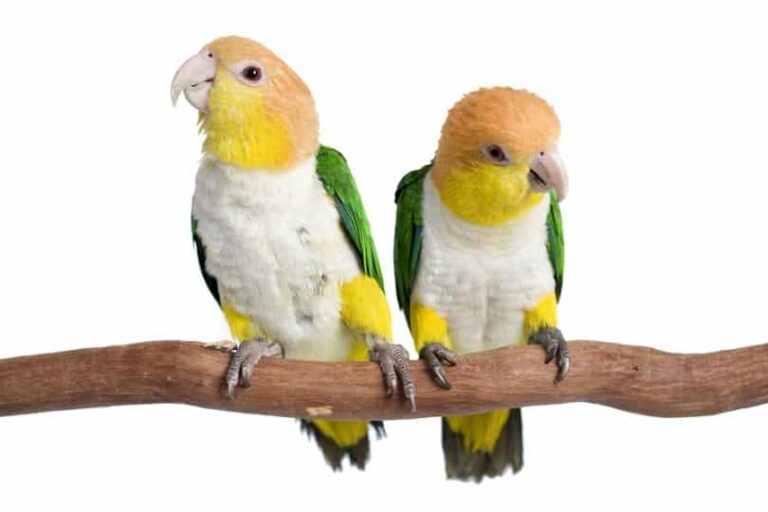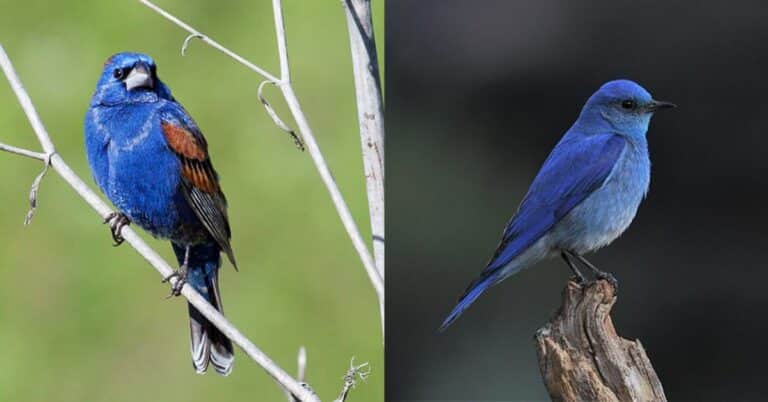Bird Anatomy: All You Need To Know
Birds are unique gifts of nature who do not obey the rules of gravity. With their magnificent wings, they can fly over pretty large territories. The birds belong to the class Aves. There are more than 10,400 species of birds found all around the world. They come in different sizes, shapes, weights, colors, habits, and traits.
Since you came across this article, you must be curious about bird anatomy. Well, you have found the right article.
Briefly About Birds
Before discussing the bird anatomy, let’s briefly review the characteristics of birds. No other creature on Earth has feathers, which sets the birds apart from all different animal classifications. Any animal with feathers is unquestionably a bird. Birds are warm-blooded with four chambers of hearts, just like mammals. They are thought to have developed from dinosaurs but are more closely linked to reptiles.
They lay hard-shelled eggs and have extraordinary eyesight, the most acute of their senses. For millions of years, their limbs have been transferred into the wings. The majority of birds sleep at night since they are diurnal. Although most are able to fly, some species, such as penguins and ostriches, cannot do so.
Evolution of Bird Anatomy
For many centuries, there has been significant discussion about the evolution of birds. One of the most famous theories of bird anatomy evolution is known as the Theropod Ancestor Hypothesis.
This theory contends that birds descended from theropod dinosaurs between 165 and 150 million years ago, during the Jurassic Era. The T. Rex was a member of the theropod dinosaur family, which includes two-legged dinosaurs. So, it is believed that the birds have been developed from those families.
Scientists and archeologists found the oldest bird traces in fossil records. The bird is Archaeopteryx. It is believed that this particular one was kind of a hybrid between the dinosaurs and the birds.
As it was explored, the feathers and wings of those creatures were formed like the birds have it. Yet, the difference was that they had very sharp teeth. Additionally, the archaeopteryx also came with a bony tail, which was somewhat similar to the one that dinosaurs had. These oldest birds are believed to have lived in the Cretaceous and Jurassic periods.
The birds that belonged to those periods had extraordinarily swift development rates and rapidly developed into competent flyers. However, the significant extinction periods wiped out dinosaurs completely and, therefore, destroyed the population of those birds too. After the world went back to normal, the diversity of contemporary birds increased dramatically.
Feathers
The most significant part of bird anatomy is undoubtedly the feathers. Feathers, which are essentially highly developed scales, are a feature of all birds. The most obvious indication of birds’ strong resemblance to reptiles is the scales on their feet. As was already said, no other kind of animal has feathers.
Feathers are composed of keratin, just like human nails and hair. They have a variety of functions, from giving off heat to facilitating flight. Most birds molt or shed their feathers once or twice a year.
An interesting fact about bird anatomy is that birds with contour feathers have streamlined bodies and can fly more efficiently. Soft, fluffy feathers provide warmth. Male birds often use their feathers to attract the attention of females. Flight feathers are located on the wings and tail of the bird.
Wings
Although they are a main feature of birds, other animals also have wings. For instance, many different kinds of insects have wings, as do bats, which are flying mammals. Wings are propelled by powerful chest muscles, enabling flight. For the express purpose of lifting the wings, bird bodies are curved. So, the wings are one of the major parts of bird anatomy.
Depending on the species, various wing forms offer various benefits. For instance, wings with pointed, thin tips enable faster flight. Birds that have shorter and wider wings have the ability to stay longer in the air. Small, swift movement is made possible by the songbirds’ elliptical, uniformly formed wings. The wings of aquatic birds, such as penguins and puffins, are formed like flippers.
Bills
Bills are another significant part of every bird’s anatomy. It is a bony protrusion encased in keratin layers. Strong clues regarding a bird’s feeding habits may be found in the structure of its beak. None of the birds have actual teeth. The tumia is the ridge located on the sides of the beaks. As a result, the beak is essential for eating.
For instance, birds that feed largely on seeds typically have cone-like beaks, which are very strong. Waterfowl like ducks, geese, and others have flat, wide beaks that are made to assist them in getting food out of liquids. Animals that consume meat, such as owls and hawks, have very strong beaks with a hook shape. They are not only strong but also sharp. This helps to tear, cut, and rend the meat into small, bite-size pieces.
Skeleton
The discussion of bird anatomy typically starts with the skeleton. Some species of birds that cannot fly have thick, marrow-filled bones. The majority of birds, or those that can fly, have lightweight skeletons consisting of hollow bones.
Their fused bones, including the collarbones, enable them to properly support their wings during flying. Large sternums, or breastbones, are also seen in the birds. They are the structures where the wing muscles are strongly attached.
Reproductive System
The bird anatomy of the digestive system is unique. They do not have a penis as other mammals do. Instead of this, the birds of both genders have a cloaca. Cloaca is like a chamber that has an opening. The openings are from where the sperm of the egg is discharged. Additionally, the same opening is responsible for urinary waste.
When the mating season comes, the cloacal openings start to swell. And both the male and female rub the cloacas. During this process, the sperm is transferred. It goes up to the chamber and, as a result, fertilizes the egg.
Bird’s Digestive System
The bird has a pretty complex digestive system. The process starts with finding food and ends with expelling the waste. Birds have unique bills that make it easier for them to bite off food. Yet they do not have the teeth and, therefore, can not chew. Instead, birds eat their meal or tear it apart into small pieces. Otherwise, it is too uncomfortable for them to consume directly. The digestive system and overall bird anatomy are built on each other.
Some birds use their beak to crack tougher pieces of nuts or huge seeds. In certain instances, birds will beat their meal against a rock or limb to help break it into bits. Birds use their tongues to help transfer the meal properly into the throat. They put their heads back to move the food in the back.
The digestive system of a bird consists of several organs. Typically, the food goes from the bill to the crop. In the throat, the esophagus is where the extra food is stored. So the bird can digest it gradually.
The proventriculus, the first section of the stomach, is where the food goes after that. Here, it is softened by the digestive fluids, mucus, and gastric acid. The food is broken down into smaller pieces by the gizzard. The gizzard is the second part of the stomach. The food is broken down with the help of grit that the bird has already ingested. The meal goes into the little opening once it has been sufficiently broken down.
Once the meal has been properly digested, it goes into the small intestine. The big intestine, which is quite short in most birds, comes next. The ceca, two pouches that help conclude the digestion process and absorb any last bits of water from the meal.
Bird’s Eggs
A bird’s life starts when the fetus is created in the eggs. This is the very first stage and the beginning of bird anatomy. Therefore, it is also important to explore the bird’s eggs too.
Another trait shared by all birds is that they lay eggs. It is not exclusive to this group of creatures, though. Many other animals in the world, such as insects, fish, reptiles, and amphibians, lay eggs.
Bird eggs have thick, mostly calcium-based shells that are protected by a coating of hardened mucus. The yolk and albumin, which are found in the egg white, are the main sources of food for the embryo, which is located inside the egg. The majority of bird species construct nests for their eggs. They stay with the hatchlings until they are long enough to survive on their own. In the majority of animals, both sexes contribute significantly to childrearing and raising.
Almost all birds incubate eggs. Yet, the exceptions are mound builders or megapodes. They typically rely on outside heat sources like decomposing plants. The second group, which includes cowbirds and cuckoos, favors using other birds’ nests for egg-laying.
Bottom Line – Bird Anatomy
Birds are unique creatures that have been around the Earth for millions of years. Scientists believe that the first birds appeared in the period when dinosaurs roamed. In this article, we discussed bird anatomy, which is very interesting to explore. No other creatures have feathers, and very few living organisms can fly as birds do. Therefore, birds are undoubtedly fascinating animals.

Nato is a content writer and researcher with a background in psychology who’s eager to explore the wonders of nature. As a travel enthusiast and animal lover, she hopes to inspire others to discover and cherish the beauty and importance of the natural world.







